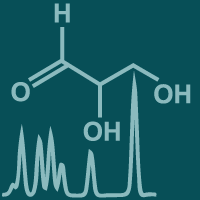Topic Menu
► Topic MenuTopic Editors


Nutritional and Functional Properties of Cereal Crops
Topic Information
Dear Colleagues,
Economic development around the world and the rapid growth of the world’s population has lead to increasing demands for healthy foods with better nutritional and functional properties from modern consumers. In the global market, more attention has been paid to the ingredients and nutritional value of food products. Major cereal crops (i.e., wheat, maize, rice, barley, and sorghum) provide the main source of our daily caloric and protein intake. Besides improving the crop yield, the nutritional and functional properties of cereal crops have drawn increasing attention in both basic and applied research areas. Cereal grains are composed of three major components, starches, proteins, and lipids, with other minor albeit important ingredients, such as minerals, fibres, vitamins, and bioactive metabolites. The nutritional properties of cereals can not only be attributed to their major grain composition but, more importantly, to the contents of these minor compositions. For example, the contents of pro-vitamin A or anthocyanins in cereal grains make them more valuable for breeding, with these becoming major target traits for nutritional improvement. In addition, other ingredients such as phenolics, tannins, selenium, and fibres have also been recognized as beneficial compounds and are associated with reduced risk of nutrition-linked chronic diseases, including cardiovascular disease, inflammation, and diabetes. These functional properties cover the wide range of food-processing properties of these cereals, with a distinct emphasis being placed on certain crops. For example, bread- and noodle-making qualities are important for wheat improvement, while starch-related parameters are among the main functional properties to be enhanced in rice. Recently, evidence has been shown that some functional properties are associated with nutritional quality as well, uncovering new directions for coordinating both nutritional and functional properties. For instance, the carotenoid content affects the opaqueness of maize kernels. This Special Issue will welcome a variety of papers, including original research articles, brief communications, reviews, perspectives, and opinions, that showcase recent advances in our understanding of the nutritional and functional properties of cereal grains. This Special Issue will emphaize topics that include, but are not limited to, the following areas:
- Metabolites and their genetic mechanisms in cereal crops that significantly contribute to the nutritional and/or functional properties of those crops;
- Novel approaches that can enhance the nutritional and/or functional properties of cereal grains, including food chemistry, genetic modification, and agronomy or breeding;
- Studies that focus on the coordination of multiple nutritional quality parameters or the synergistic effects between nutritional and functional properties;
- Nutritional or medical studies using animal models or human cohorts to demonstrate the beneficial effects of new cultivars or lines of cereal crops with enhanced nutritional and functional properties.
Prof. Dr. Guangyuan He
Dr. Yin Li
Dr. Junli Chang
Dr. Min Tu
Dr. Yaqiong Wang
Topic Editors
Keywords
- nutritional properties
- functional properties
- cereal crops
- wheat
- maize
- sorghum
- rice
- bioactive compounds
- functional foods
Participating Journals
| Journal Name | Impact Factor | CiteScore | Launched Year | First Decision (median) | APC |
|---|---|---|---|---|---|

Antioxidants
|
7.0 | 8.8 | 2012 | 13.9 Days | CHF 2900 |

Crops
|
- | - | 2021 | 30.5 Days | CHF 1000 |

Foods
|
5.2 | 5.8 | 2012 | 13.1 Days | CHF 2900 |

Metabolites
|
4.1 | 5.3 | 2011 | 13.2 Days | CHF 2700 |

Nutrients
|
5.9 | 9.0 | 2009 | 14.5 Days | CHF 2900 |

MDPI Topics is cooperating with Preprints.org and has built a direct connection between MDPI journals and Preprints.org. Authors are encouraged to enjoy the benefits by posting a preprint at Preprints.org prior to publication:
- Immediately share your ideas ahead of publication and establish your research priority;
- Protect your idea from being stolen with this time-stamped preprint article;
- Enhance the exposure and impact of your research;
- Receive feedback from your peers in advance;
- Have it indexed in Web of Science (Preprint Citation Index), Google Scholar, Crossref, SHARE, PrePubMed, Scilit and Europe PMC.




